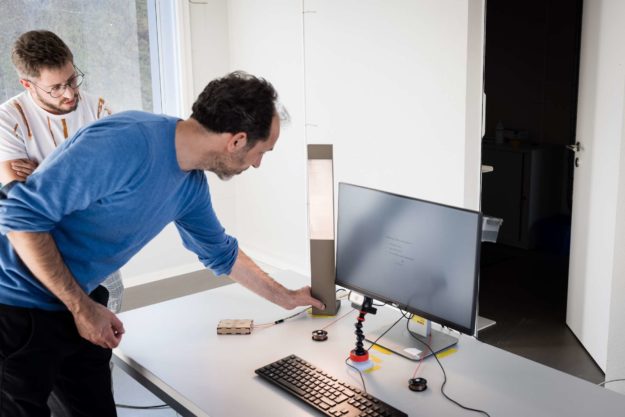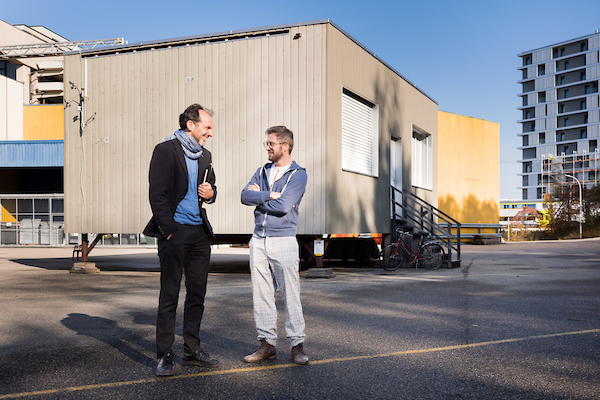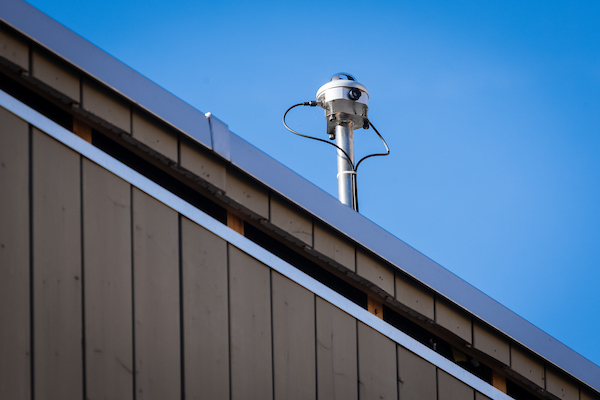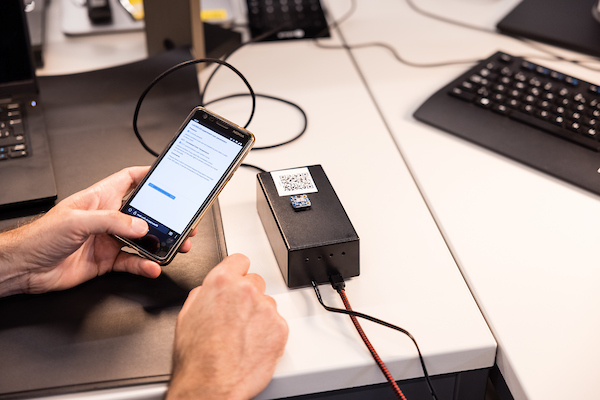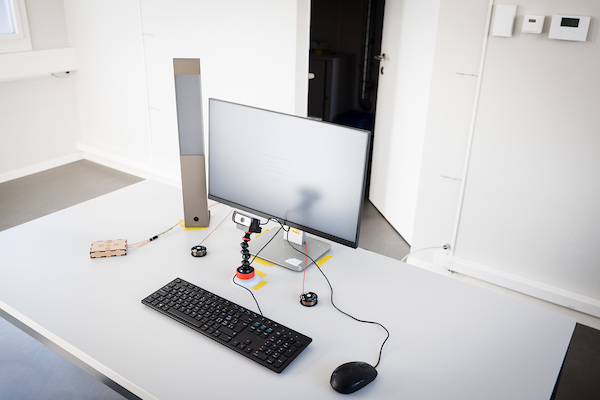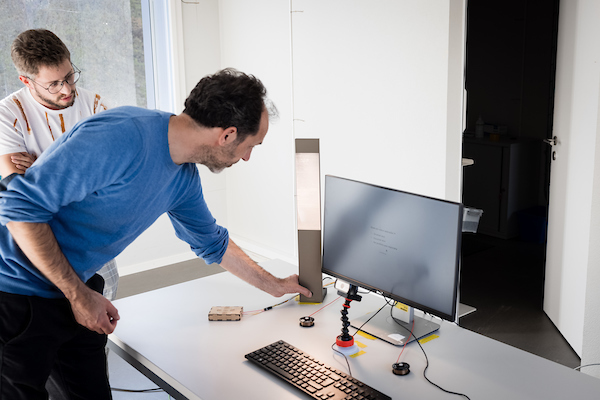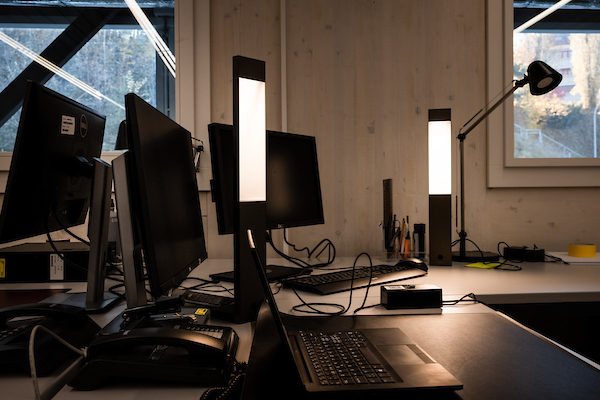Research Story
Sensors covered with sticky tape and deliberately disabled smart blind motors… these are just a few examples of users' DIY solutions to troublesome everyday building automation systems. Yet, the user comfort and energy efficiency of these systems can only be improved if there is a decent level of user acceptance. The LUCIDELES project, led by the Human-IST Institute of the University of Fribourg, has two aims. The first is to optimise light management by leveraging natural daylight. The second is to carry out user testing on a smart control device in order to better understand user acceptance mechanisms.
"Generally speaking, system optimisation tends to focus on energy efficiency, potential cost savings and modelled comfort factors", explains Julien Nembrini, a researcher and lecturer at the Human-IST Institute of the University of Fribourg. "Rarely does this process consider the end user." Nembrini and his research team joined forces with Jérôme Kaempf, from the Idiap research institute in Martigny, and Regent Lighting in Basel to develop a project on designing user-centric automated light control systems. Tests are conducted simultaneously at multiple sites: Idiap, as well as the CELLS (Controlled Environments for Living Lab Studies) laboratory and offices of the Smart Living Lab in Fribourg, with the technical support of the IT team of the EPFL Building2050 Group.
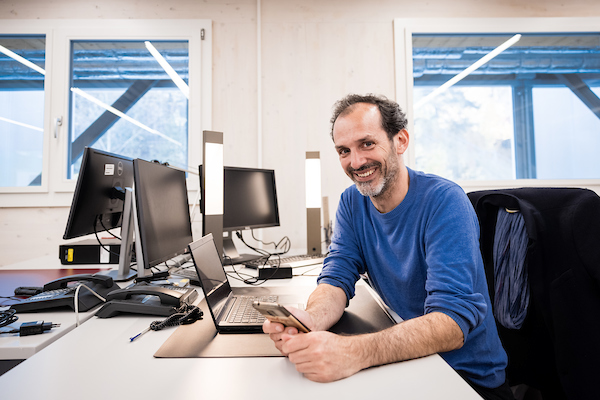
"Generally speaking, system optimisation tends to focus on energy efficiency and modelled comfort factors. Rarely does this process consider the end user."
— Julien Nembrini, research and teaching assistant, Human-IST, UNIFR
Nembrini explains that there are two strands to the LUCIDELES project. "First, we developed an automation system that prioritises natural daylight in order to optimise light control in a workplace setting." Idiap, which specialises in this field, was in charge of modelling the relevant volumes and the impact of sunlight. This information was used to control the amount of artificial light, as well as the blinds and their tilt angle.
The team then produced light simulations, which involved a considerable amount of computing time. These formed the basis for the next stage which was the use of machine learning to gradually simplify the system in order to obtain an immediate prediction. "The aim was to optimise user comfort and energy efficiency."
Testing the system under real-life conditions
The second part of the LUCIDELES project involves the user testing of the automated light control system. Michael Papinutto, a PhD student in psychology and researcher at the Human-IST Institute explains how the test phase is organised, "It is divided into two levels. Level 1 involves volunteers playing a game in a laboratory/office during which we maintain full control over all of the factors involved. The idea here is to optimise the automated controls and observe user responses."
Volunteers are also asked to complete a form about their experiences and fill in a personality questionnaire. "We formulated a series of hypotheses on the acceptance or non-acceptance of automation systems beforehand. These form the basis of our work."
Level 2 tests the system under real-life conditions. The automation system is installed in a Smart Living Lab office on the bluefactory site. The occupants are able to change the light control settings using either the buttons fitted on their desk lamp or an online application. They can also turn the system off and on using a switch.
"Several studies have already been carried out on user acceptance of automation", notes Nembrini. "They tend to show that acceptance is higher if the system allows for a certain degree of user control and the user understands the system." LUCIDELES aims to pinpoint the acceptance criteria with a view to optimising the user comfort and energy efficiency of smart light control systems.

"Several studies tend to show that acceptance is higher if the system allows for a certain degree of user control and the user understands the system."
A Swiss project with links to the International Energy Agency
The LUCIDELES project ties in with one of the tasks set by the International Energy Agency and taken up by Switzerland, namely the study of the relationship between natural and artificial light use in buildings, and the relationship between the end user and the lighting control system, with a view to improving energy efficiency. The Swiss Federal Office of Energy (SFOE) is a co-funder of the project. One of its funding requirements is the involvement of an industrial partner to ensure that the research is geared towards practical applications. One of Europe's leading lighting manufacturers, Regent Lighting in Basel has agreed to partner the LUCIDELES project.
Text: Sophie Roulin / Pictures: Guillaume Perret / Translation : Transit TXT
Gallery
Contact

Julien Nembrini
-human-building interaction
-user-centered interfaces

Michaël Papinutto
-human-building interaction
-multimodal tracking
Information
Human-IST (UNIFR)
Building2050 Group (EPFL)
CELLS
Idiap
Regent Lighting
